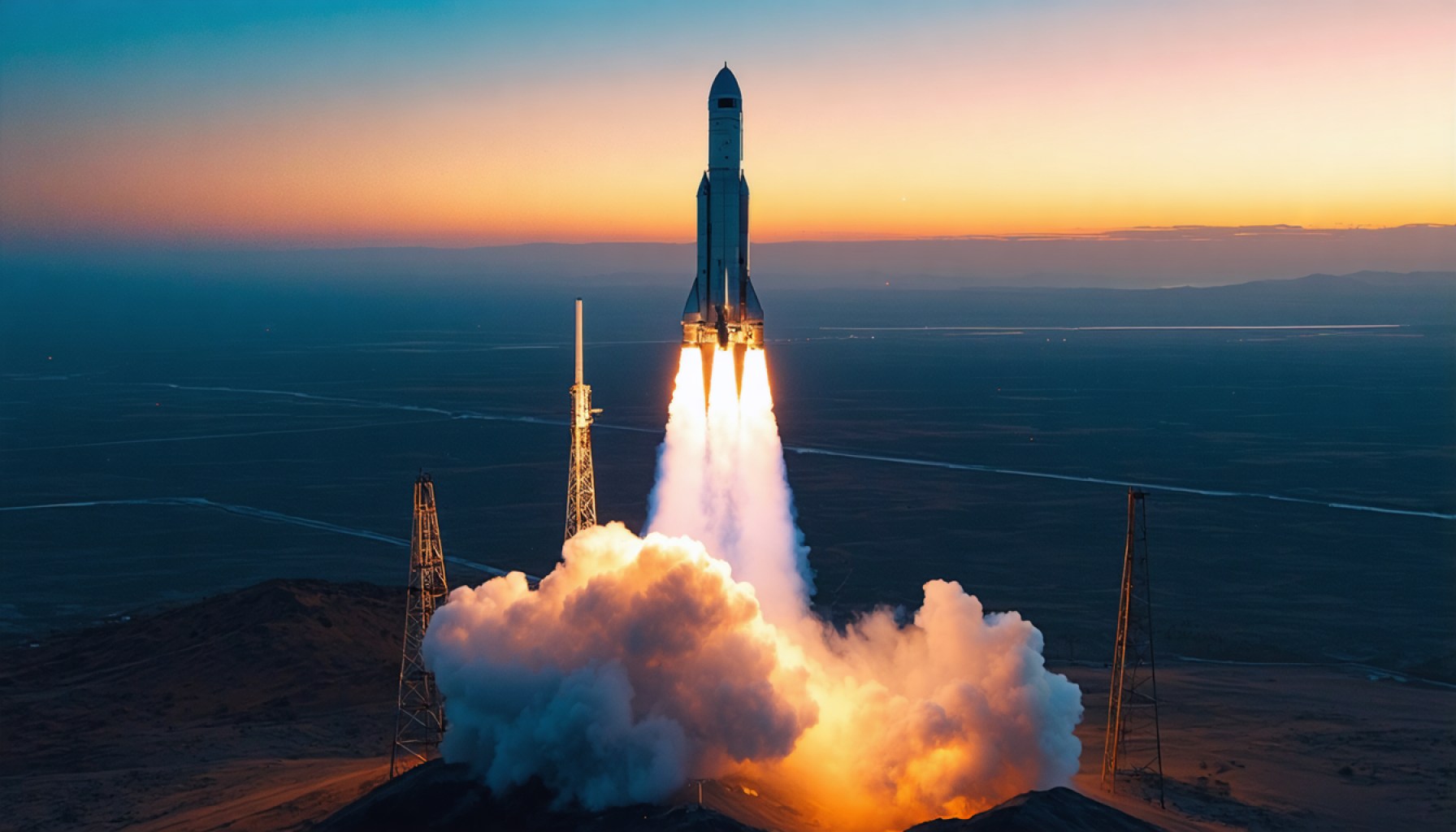- SpaceX’s Falcon 9 rocket launched 21 Starlink satellites from NASA’s Kennedy Space Center, expanding its constellation in low Earth orbit.
- Thirteen of these satellites feature Direct to Cell technology, aiming to eliminate cellular blackouts in remote areas and enhance global connectivity.
- The mission extends SpaceX’s network to over 100 countries, contributing to a vast communication web.
- Concerns persist about satellite debris, as increasing space traffic poses risks to exploration and Earth’s atmosphere.
- SpaceX’s pursuit highlights the importance of balancing technological advancement with environmental responsibility.
Beneath the vast cerulean sky of Florida, a massive display of technology and ambition soared upwards from NASA’s Kennedy Space Center. Powered by the relentless engines of a Falcon 9 rocket, SpaceX sent yet another flotilla of satellites to join its ever-expanding constellation in low Earth orbit. The mission carried 21 Starlink satellites, each a part of SpaceX’s intrepid quest to provide global internet coverage.
Among these, thirteen satellites housed a cutting-edge innovation known as Direct to Cell technology. These technological marvels are designed to eliminate the cellular blackouts that plague remote areas, promising to redefine connectivity by transforming dead zones into vibrant hubs of communication. Picture a world where sprawling deserts, distant archipelagos, and towering mountain ranges no longer sever mobile links, stitching the globe together in an intricate web.
As these new satellites slipped into the ether, contributing to an expansive armada already numbering in the thousands, an unparalleled tapestry of communication unfurled above Earth, now reaching over 100 countries. However remarkable the venture seems, it’s not devoid of controversy. As the satellites found their orbital homes, a hushed tension accompanied their celestial choreography.
Critics stand at the other end of the spectrum, worried about the invisible ties binding these advancing wonders. Concerns ring loud about the graveyard of satellite debris accumulating in space, posing a very real threat to both dreams of outer space exploration and the sanctity of Earth’s atmosphere. The potential chaos of successive collisions in these cosmic highways could spell disaster.
Yet, beneath these stars lies a poignant promise—a vision of a seamlessly connected world. SpaceX’s endeavor encourages society to contemplate the balance between innovation and stewardship, straddling the line between ambition and responsibility. As the satellites blink in the night sky, a crucial message resonates: with the universe at our fingertips, it is imperative to tread carefully, ensuring our reach for the stars does not cast a shadow over our home planet.
SpaceX’s Starlink Revolution: The Promise and Perils of Global Connectivity
The New Frontier of Direct-to-Cell Technology
SpaceX’s recent launch of 21 Starlink satellites, including the groundbreaking Direct to Cell technology, is poised to redefine global communication networks. This innovation allows satellites to directly connect with cell phones without traditional ground stations, potentially solving coverage issues in remote areas such as deserts, islands, and mountains. The aim is to transform previously unreachable areas into thriving communication hubs, offering a glimpse into the future of connectivity where no place on Earth is out of touch.
How Direct-to-Cell Works
1. Satellite-Uplink: Direct to Cell technology allows mobile devices to connect directly to satellites, bypassing the need for terrestrial cell towers.
2. Improved Latency: With fewer infrastructure hurdles, users experience faster data transfer speeds.
3. Global Reach: Provides network access in hard-to-reach locations, benefiting travelers, disaster response teams, and residents in underserved regions.
Real-World Applications
– Disaster Relief: In emergency situations where traditional infrastructure is destroyed, Direct to Cell can provide immediate communication capabilities.
– Remote Work and Education: As remote work and online education become the norm, this technology can bridge the digital divide faced by rural areas.
– Maritime and Aviation: Provides reliable communication for ships and aircraft in regions where coverage is traditionally spotty or nonexistent.
Challenges and Controversies
While the benefits of Direct to Cell technology are significant, it comes with its own set of challenges:
– Space Debris Concerns: The growing number of satellites increases the risk of orbital debris collisions, a concern echoed by astronomers and space agencies worldwide.
– Interference with Astronomy: The bright reflections from satellites can interfere with astronomical observations, compelling organizations like the International Astronomical Union to seek mitigation strategies.
– Regulatory Hurdles: Maintaining international regulatory compliance for global satellite communications is a complex and ongoing challenge.
Industry Trends and Predictions
– Market Expansion: SpaceX’s success with Starlink might prompt other companies to invest in similar technologies, expanding global satellite networks.
– Improved Satellite Sustainability: Developing eco-friendly and sustainable satellites becomes crucial as the industry seeks solutions to mitigate risks associated with space debris.
– Advancements in AI: AI-driven collision avoidance systems may be employed to manage space traffic more effectively, safeguarding both satellites and Earth’s orbital environment.
Actionable Recommendations
– Stay Updated: As technologies evolve, keeping abreast of developments in satellite communications can provide insights into personal and professional opportunities.
– Consider Alternatives: Those in remote areas or industries like maritime or aviation could invest in compatible devices to leverage Direct to Cell technology when it becomes widely available.
– Support Sustainable Initiatives: Encourage involvement in sustainability initiatives for satellite manufacturing and debris management through public pressure or policy advocacy.
For further information on SpaceX, you may visit the SpaceX website. This cutting-edge technology by SpaceX paves the way for novel communication strategies while highlighting the need for responsible space management. As we continue to push the boundaries of what’s possible, we must also safeguard the future of space exploration.
